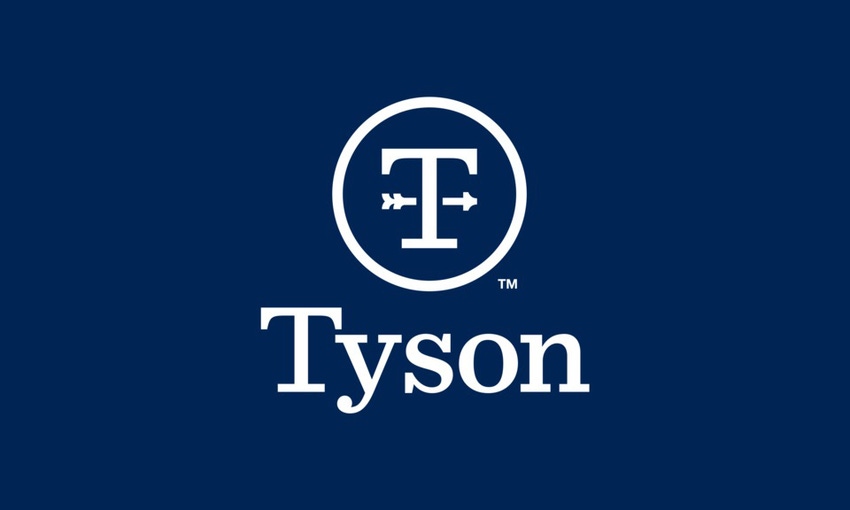Tyson Q1 2020 results in line with expectations
Beef and Pork segment results up as effects of African swine fever began to materialize.
February 6, 2020

Tyson Foods Inc. released its 2020 first-quarter results on Feb. 6, which showed that net income rose to $557 million, or $1.52 per share, versus $551 million, or $1.50 per share, a year earlier.
“Our overall results in the first quarter of fiscal 2020 were in line with expectations,” Tyson chief executive officer Noel White said. “Our Beef and Pork segments performed well as the effects of African swine fever [ASF] are beginning to materialize. Our Chicken segment performed better operationally, although in a soft pricing environment. Our Prepared Foods segment produced its sixth consecutive quarter of retail consumption growth, demonstrating the strength of our brands and innovation as we grew or held market share in all core categories.”
With improved access to global markets resulting from recent trade developments, White said there are reasons to be optimistic about fiscal 2020 and beyond as Tyson is “well-positioned to capitalize on opportunities in the global marketplace.”
“Although we anticipate the challenges and volatility typical in our second fiscal quarter, our long-term outlook remains positive,” he said.
Summary of segment results
Beef - Sales volume decreased due to a reduction in live cattle harvest capacity as a result of a fire that caused the temporary closure of a production facility for the majority of the first quarter of fiscal 2020. Average sales price increased as beef demand remained strong. Operating income increased as revenues were maximized relative to live fed cattle costs but partially offset by increased operating costs and $16 million of net incremental costs from a production facility fire.
Pork - Sales volume increased due to increased domestic availability of live hogs and strong demand for pork products. Average sales price increased, which was associated with higher livestock costs and stronger export markets. Operating income increased as Tyson maximized revenues relative to the live hog markets, partially attributable to favorable export markets and improved operational performance, which were slightly offset by higher operating costs.
Chicken - Sales volume increased primarily due to incremental volume from a business acquisition that was partially offset by lower volume from the rendering and blending business. Average sales price increased due to lower rendering and blending sales, which carry a lower average sales price, largely offset by broadly weaker chicken pricing as a result of market conditions. Operating income decreased primarily from challenging pricing conditions. Additionally, operating income in the first quarter of fiscal 2020 was affected by $21 million in restructuring costs.
Prepared Foods - Sales volume decreased as growth in volume across the consumer products business was offset by other intersegment sales channel shifts. Average sales price increased due to a favorable product mix and the pass-through of increased raw material costs. Operating income decreased primarily due to increased operating costs, including an $80 million increase in raw material costs. Additionally, operating income in the first quarter was affected by $22 million in restructuring costs.
Exports to absorb increased production
Regarding fiscal 2020, Tyson said the U.S. Department of Agriculture has indicated that domestic protein production (beef, pork, chicken and turkey) should increase approximately 3-4% from fiscal 2019 levels. Tyson expects export markets to absorb the increased production.
The following is a summary of the outlook for each of the company’s segments:
Beef – Tyson expects industry fed cattle supplies to increase approximately 1% in fiscal 2020 compared to fiscal 2019. The company expects ample supplies in regions where it operates plants. For fiscal 2020, the Beef segment's adjusted operating margin is expected to be toward the upper end of 6.5-7.5%, absent additional impacts from ASF.
Pork – Tyson expects industry hog supplies to increase approximately 4% in fiscal 2020 compared to fiscal 2019. The company expects increased livestock costs in fiscal 2020 compared to fiscal 2019. For fiscal 2020, adjusted operating margin for the Pork segment is expected be 6-8%, absent additional impacts from ASF.
Chicken – USDA projects a 4% increase in chicken production in fiscal 2020 compared to fiscal 2019. For fiscal 2020, Tyson believes the adjusted operating margin for its Chicken segment will be 4-6%, absent additional impacts from ASF.
Prepared Foods – Tyson expects raw material costs to increase throughout fiscal 2020 compared to fiscal 2019 but expects to recover these costs through pricing over time. Given the timing lag on passing these prices through, the company may not fully recover these costs within the fiscal year. For fiscal 2020, the company believes the adjusted operating margin for the Prepared Foods segment will be 10-12%.
You May Also Like


.png?width=300&auto=webp&quality=80&disable=upscale)
